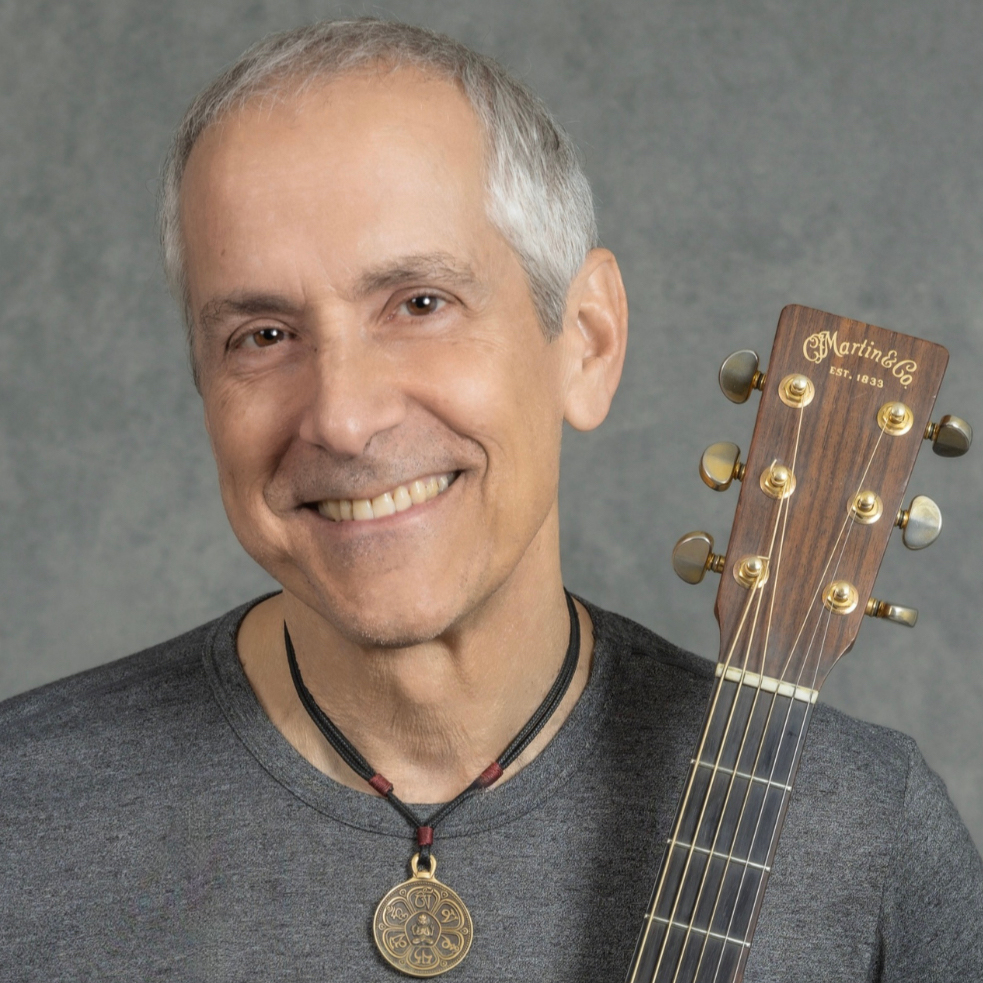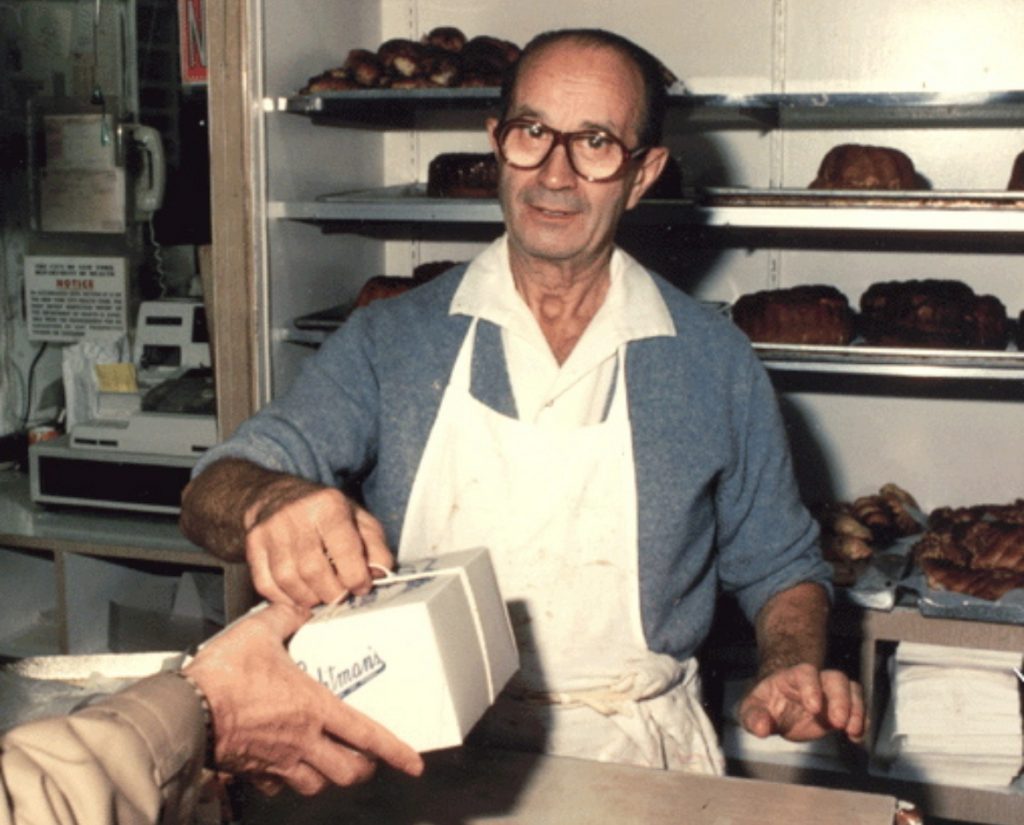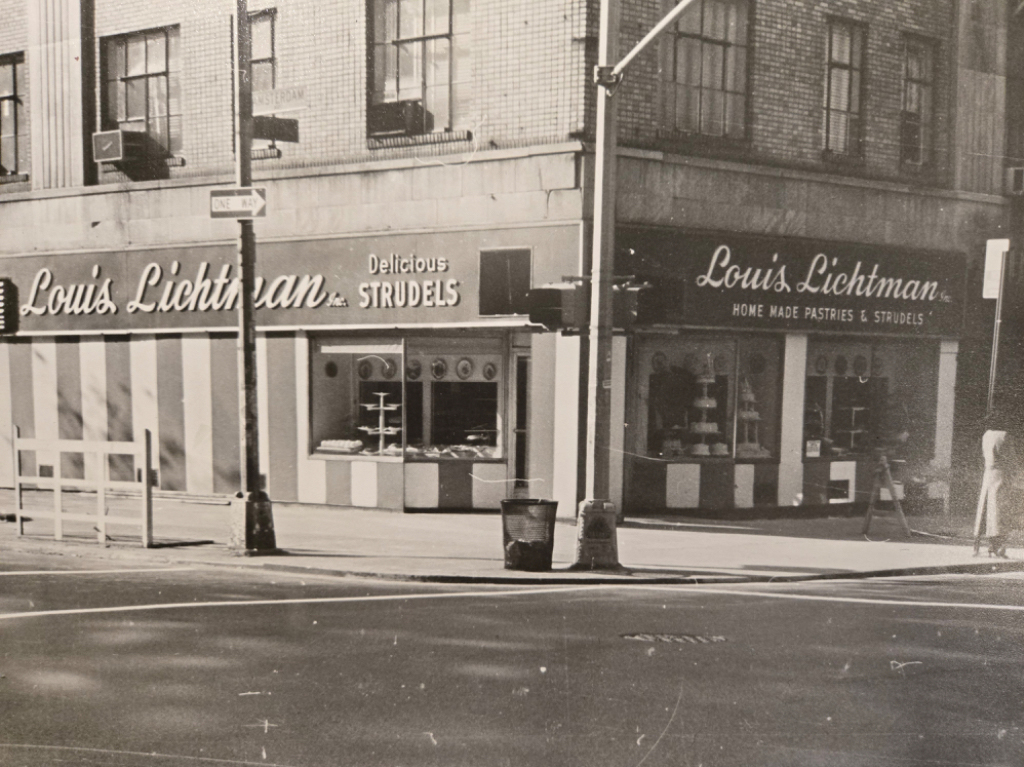 By Claudie Benjamin
By Claudie Benjamin
A New Yorker article in the July 20, 1987 issue of the magazine poignantly described the auction of the effects of Louis Lichtman’s, the bakery that had long been on the corner of 86th Street and Amsterdam Avenue. Folk musician David Roth recently described how he was inspired by that article. His song “Bake Sale” he said, “has been a personal favorite of mine for quite some time now. I read about the closure of Lichtman’s in the New Yorker and was moved to write a song. The article was called “Bake Sale” and that also became the title of the song. SEE IT HERE.
Roth added that many years later, about a dozen people he’d never seen before were in the front row of a coffeehouse where he was giving a concert on the North Shore of Boston. “Turns out they were all (including his son Ron) relatives of Mr. Lichtman, had heard about the song, and came en masse to meet me and express thanks. And one of them provided me a photograph of Louis himself handing someone a box over the counter.”
Asked if he had ever been a Lichtman’s customer, Roth responded, “I did live in Manhattan, had a black and white or two from Lichtman’s when I lived on the Upper West Side before I moved down closer to Greenwich Village, where my “singer/songwriter training” began in earnest. I somehow turned it into a career that has lasted 37 years (and counting…).”
The origin of Lichtman’s goes back to around 1903 when Alex and Bertha Herbst made a wedding trip from Hungary to the United States. They soon established Mrs. Herbst’s Bakery on the Upper East Side. Herbst was Bertha’s family name. The shop was widely known for its cherry, poppy seed, and cabbage strudels among many other varieties. Louis, Alex’s younger brother, later joined him in New York and worked for nine years at Mrs. Herbst’s before opening his own bakery in 1947 on West 87th Street and Amsterdam Avenue. He moved the business in 1962, to the art deco building at 200 West 86th Street, eventually relocating from an apartment in the Bronx to one on a high floor in the same building as the bakery. The entrance to the shop, with its distinctive vertical blue-and-white striped facade, was right in front of the eastbound crosstown bus stop. And, the heavenly aromas from the bakery could be appreciated even from the bus shelter.
 When they were preteens, Louis’s sons Ron and Harvey helped deliver cake boxes to customers in the pre-war apartment buildings of the neighborhood. Years later, Harvey, the younger son, took over ownership of the bakery, managing the shop for a decade before it closed. However, during that period, apart from the winter months that Louis spent in Florida, he was a daily presence in the bakery, enjoying interactions with customers and proud of the business he had built from top to bottom.
When they were preteens, Louis’s sons Ron and Harvey helped deliver cake boxes to customers in the pre-war apartment buildings of the neighborhood. Years later, Harvey, the younger son, took over ownership of the bakery, managing the shop for a decade before it closed. However, during that period, apart from the winter months that Louis spent in Florida, he was a daily presence in the bakery, enjoying interactions with customers and proud of the business he had built from top to bottom.
Drastically hiked rents, along with a diminished interest in European-style pastry, increasingly made doing business infeasible. Louis passed away three years after the bakery closed. Harvey moved on to a satisfying 24-year career as a history teacher at Brandeis High School located on West 84th Street.
Harvey’s memories of life at the bakery are bittersweet. Although he said he enjoyed preparing large batches of buttercream and mastering the art of stretching strudel dough, there were also the long hours and frustrations with managing staff and overseeing accounts, ordering supplies, and repairing equipment. He admits to having enjoyed a daily cheese Danish, and he spoke about the caring, family-like concern the members of the bakery team had for each other.
Though Harvey rarely baked after the bakery closed, he was happy to elaborately decorate multi-tiered wedding cakes for both his son and daughter. He noted that when his father and Uncle Alex spent time in Florida, they did bake at home and shared pastries over coffee.
 For many who lived on the Upper West Side or visited relatives in the neighborhood, the scents, tastes, and even the shape of Lichtman’s baked goods remain vivid.
For many who lived on the Upper West Side or visited relatives in the neighborhood, the scents, tastes, and even the shape of Lichtman’s baked goods remain vivid.
Lisa Deutscher, M.D., FABP, Psychiatrist and Psychoanalyst, recalls, “The neighborhood was dotted with bakeries every couple of blocks. But we considered Lichtman’s worth a trip, though Cake Masters and Babka were closer by. I remember going there as a teenager in the early 1970s to get their cherry tarts, which were a special treat.”
Jeri Laber, founder of Human Rights Watch and the author of a recent thriller called The Russian Key, said her daughter was likely to have a clear recollection of Lichtman’s from when they lived on 86th Street. Abby Laber readily responded, “When I was little, I remember going to Lichtman’s with my mom. The shop was bright and welcoming. They would always offer me a cookie. My very favorite baked sweet was (and in my heart, still is) a Lichtman’s honey bun. They used cashews instead of pecans, and I can remember just how they tasted: a warm, deep flavor, caramelized, not overly spiced. In a strange sort of kismet, all through my childhood, a honey bun cost the same as bus fare: 15 cents, and then 25, (and probably 30, before I left NY for school.) My best friend lived on the East Side, and my mom gave me money for the cross-town bus. I would walk the block to Lichtman’s, buy a honey bun, and then continue on foot across the park to Kathy’s.”
